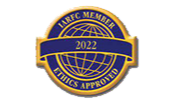Why Traditional Retirement Planning May Be Failing You
Retirement is often envisioned as a time of financial freedom, personal growth, and the ability to enjoy life on your own terms. Yet, for many Americans, retirement can turn into a period of stress, uncertainty, and financial insecurity. The reason? Traditional retirement planning approaches are failing more people than they are helping.
At Agemy Financial Strategies, we recognize that conventional wisdom around retirement, relying solely on pensions, 401(k)s, or Social Security, is no longer sufficient. Life expectancy is rising, economic landscapes are shifting, and personal financial needs are more complex than ever. Understanding why traditional retirement planning may be falling short, and what you can do to fix it, is critical for building the secure and fulfilling retirement you deserve.
Here’s what you need to know.
The Traditional Retirement Planning Model
Most retirement planning follows a predictable pattern:
- Work for several decades while contributing to employer-sponsored plans like 401(k)s or IRAs.
- Rely on Social Security as a safety net.
- Invest conservatively in bonds and stocks, following standard allocation models (e.g., 60/40 stocks-to-bonds ratio).
- Expect a fixed retirement age around 65 or 67.
While this model worked reasonably well in the past, several key factors have shifted, exposing its vulnerabilities.
1. Longer Life Expectancy Means More Financial Risk

One of the most significant changes is longevity. According to the U.S. Social Security Administration, the average 65-year-old today can expect to live another 20 years or more. Women, in particular, may live into their late 80s or early 90s.
Longer lifespans are wonderful, but they create financial pressure. Traditional planning models often assume retirement will last 15 years or less, leading to insufficient savings. Running out of money in your 80s or 90s is a real risk if your plan doesn’t account for longevity.
What to do:
- Consider longevity insurance as part of your retirement plan.
- Reevaluate withdrawal rates: The traditional 4% rule may not be realistic in today’s low-interest-rate environment.
- Build a diversified portfolio designed to sustain income for 25-30 years or more.
2. Inflation Erodes Buying Power
Traditional plans often underestimate the long-term impact of inflation. The cost of living rises every year, and even moderate inflation can significantly reduce your purchasing power over a multi-decade retirement.
For example, if you retire with $1 million today, at a 3% annual inflation rate, that money will only have the purchasing power of about $552,000 in 25 years.
What to do:
- Include investments that outpace inflation, such as equities and real estate.
- Consider Treasury Inflation-Protected Securities (TIPS) for part of your portfolio.
- Adjust your retirement income plan annually to reflect changes in the cost of living.
3. Over-Reliance on Social Security
Social Security was never designed to be the sole source of retirement income. Yet, many people overestimate how much it will provide.
- The average monthly Social Security benefit is a little over $1,900, far short of covering typical retirement expenses.
- Social Security benefits may also face future reductions due to funding challenges in the program.
What to do:
- Treat Social Security as supplemental income, not the foundation of your retirement plan.
- Maximize benefits by delaying claiming until full retirement age, or even age 70, if feasible.
- Diversify retirement income sources with personal savings, investments, and other income streams.
4. Static Investment Strategies Are Risky

Many traditional plans rely on a “set it and forget it” approach to investing, typically with static allocations that don’t evolve with market conditions or life changes.
- A 60/40 stock-to-bond allocation may not be ideal during periods of market volatility or low-interest rates.
- Investors approaching retirement may face sequence-of-returns risk, where early losses drastically reduce the sustainability of their savings.
What to do:
- Implement dynamic investment strategies that adjust based on market conditions and your personal retirement timeline.
- Rebalance your portfolio periodically to help reduce risk as you age.
- Consider alternative investments or income-focused strategies to supplement traditional portfolios.
5. Health Care Costs Are Often Underestimated
Healthcare is one of the largest and least predictable expenses in retirement. It’s estimated that a 65-year-old couple retiring today may need over $345,000 to cover healthcare costs in retirement, not including long-term care.
Many traditional plans ignore this, leaving retirees financially exposed.
What to do:
- Include comprehensive health care cost projections in your retirement plan.
- Explore Health Savings Accounts (HSAs) as a tax-advantaged way to cover future medical expenses.
- Consider long-term care insurance to help protect against the high cost of assisted living or nursing care.
6. Ignoring Lifestyle Inflation and Personal Goals
Traditional retirement plans often focus solely on numbers, how much you need to save, and when you can retire, without accounting for the lifestyle you want.
- Do you plan to travel extensively?
- Do you want to maintain a second home or support family members?
- How much do hobbies, entertainment, or charitable giving factor into your retirement vision?
Failing to incorporate these elements can lead to a mismatch between savings and lifestyle, leaving retirees disappointed or forced to compromise.
What to do:
- Clearly define your retirement goals and lifestyle expectations.
- Model retirement scenarios based on both conservative and aspirational lifestyles.
- Plan for flexibility, life changes, unexpected expenses, and opportunities that may arise.
7. Taxes Can Be a Hidden Threat
Many retirees underestimate how taxes impact their retirement income. Traditional plans often overlook the tax implications of withdrawing from 401(k)s, IRAs, or other taxable accounts.
- Withdrawals from traditional retirement accounts are taxed as ordinary income.
- Failing to plan can push retirees into higher tax brackets, reducing net income.
- Required Minimum Distributions (RMDs) after age 73 may create unexpected tax burdens.
What to do:
- Consider using tax-efficient strategies, such as Roth conversions, to help manage future tax exposure.
- Diversify between taxable, tax-deferred, and tax-free accounts.
- Consult a financial advisor to model tax impacts across different retirement income scenarios.
8. Lack of Contingency Planning
Life is unpredictable. Market downturns, health crises, or unexpected family obligations can derail even the best-laid plans. Traditional planning often fails to incorporate contingencies.
What to do:
- Maintain an emergency fund even in retirement.
- Consider insurance options, such as long-term care or disability insurance, to help mitigate risk.
- Revisit your retirement plan annually and adjust for changes in life circumstances.
Why Agemy Financial Strategies Offers a Better Approach

At Agemy Financial Strategies, we understand that the traditional “one-size-fits-all” retirement plan is outdated. Our approach emphasizes:
- Personalized Planning: Every client has unique goals, timelines, and risk tolerances. We design strategies that reflect your life, not a generic model.
- Dynamic Investment Management: We proactively adjust portfolios to reflect market conditions, minimize risk, and sustain income.
- Tax-Smart Strategies: We integrate tax planning into retirement strategies to help preserve wealth and maximize after-tax income.
- Comprehensive Risk Management: Our plans consider longevity, healthcare, and unexpected life events to protect your retirement security.
- Lifestyle Alignment: Retirement planning should reflect your desired lifestyle, not just your savings balance. We help you create a plan that aligns with your dreams.
By considering the whole picture, investments, taxes, healthcare, lifestyle, and risk, Agemy Financial Strategies helps clients bridge the gaps left by traditional retirement planning.
Actionable Steps to Revamp Your Retirement Plan
Even if you’ve been following a traditional approach, there’s time to course-correct. Here’s how to get started:
Step 1: Conduct a Comprehensive Retirement Assessment
- Evaluate your current savings, investments, and projected income.
- Identify potential shortfalls, considering inflation, healthcare costs, and lifestyle goals.
Step 2: Diversify Income Sources
- Combine Social Security, pensions, retirement accounts, and other investments.
- Consider alternative investments for steady income.
Step 3: Incorporate Tax Planning
- Use Roth conversions, strategic withdrawals, and tax-efficient investments.
- Plan for RMDs and their potential impact on taxes.
Step 4: Plan for Longevity and Healthcare
- Include projected medical costs and long-term care needs.
- Reassess your healthcare coverage and explore supplemental insurance options.
Step 5: Align Your Plan With Your Lifestyle Goals
- Quantify the costs of your desired lifestyle.
- Incorporate travel, hobbies, family support, and charitable giving into financial projections.
Step 6: Review and Adjust Regularly
- Life and markets change; your plan should too.
- Schedule annual reviews with a financial advisor to make necessary adjustments.
Common Retirement Planning Mistakes to Avoid
Even with good intentions, many retirees make mistakes that undermine their financial security:
- Starting too late: Time is a critical asset in compounding wealth.
- Underestimating inflation: Even small inflation rates can drastically reduce purchasing power.
- Failing to diversify: Relying on a single account or investment type increases vulnerability.
- Ignoring taxes: After-tax income is what truly matters in retirement.
- Neglecting risk management: Unexpected life events can derail unprotected plans.
The Bottom Line

Traditional retirement planning may provide a basic framework, but it often falls short of meeting modern retirees’ needs. Longer lifespans, inflation, rising healthcare costs, and changing markets mean that relying solely on conventional methods can leave you financially exposed.
At Agemy Financial Strategies, we take a comprehensive, personalized approach to retirement planning. By considering your lifestyle, goals, risk tolerance, and the broader economic environment, we create strategies designed not just to survive retirement, but to thrive in it.
Your retirement should be a time of opportunity and freedom, not worry and compromise. Don’t leave it to chance, revamp your plan with a forward-thinking approach that addresses the shortcomings of traditional strategies.
Take Action Today
If you’re ready to move beyond outdated retirement models and secure a financially confident future, Agemy Financial Strategies is here to help. Schedule a consultation today and start building a retirement plan that works for you, because your golden years deserve more than a one-size-fits-all approach.











